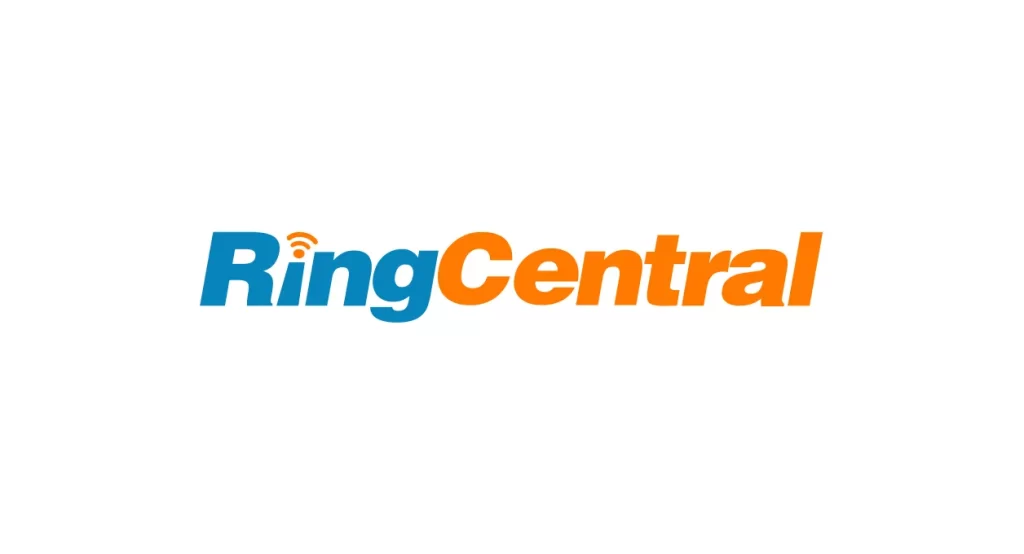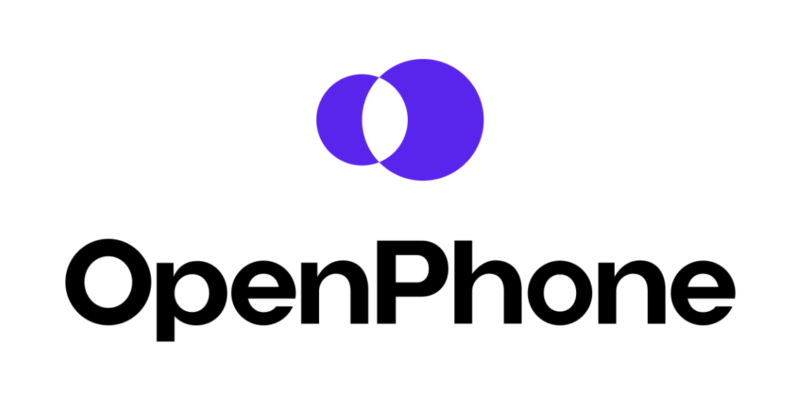In todays fast-paced business environment, effective communication is a must for any successful company.Featuring innovative features and a user-friendly interface, OpenPhone has quickly become a favorite for businesses looking to streamline their communication processes.As with any tool, its important to consider openphone alternative solutions that may be a more perfect fit for your particular needs. Thats what we’ve done in this exhaustive guide. In it, well detail the top openphone alternative solutions and explore what sets them apart, their limitations and their features.
Feature And Limitation Of OpenPhone

Understanding the feature and limitation of OpenPhone gives businesses key insights about what it can (and can’t) do. Once a business understands these limitations, they can make a more informed decision about their communication solution.
Features Of OpenPhone
- Virtual Phone Numbers: Use virtual phone numbers so you can make or receive calls from anywhere.
- Text Messaging: Send and receive text messages with your business phone number to keep your communication centralized.
- Call Forwarding: Forward calls so you never miss an important call.
- Voicemail Transcription: transcribe your voicemails so you can manage them with ease.
- Integration: OpenPhone integrates with the business tools you are already using including Slack, making it easy to manage your communication across the board.
Limitations Of OpenPhone
- Limited International Coverage: OpenPhone may have limitations in terms of international coverage. Businesses with operations or clients in certain regions may find that OpenPhone does not provide extensive coverage, impacting their ability to communicate seamlessly across borders.
- Cost Considerations: While OpenPhone offers competitive pricing plans, the cost may become a limiting factor for businesses with high call volumes or specific feature requirements. The pricing structure may not be as flexible as some businesses need, potentially making it less cost-effective for certain scenarios.
- Dependency on Internet Connectivity: OpenPhone relies on internet connectivity for its operations. In areas with poor or unstable internet connections, users may experience disruptions or degraded call quality, affecting the overall reliability of the service.
- Advanced Feature Limitations: For businesses that require highly advanced or industry-specific features, OpenPhone may have limitations in comparison to more specialized communication solutions. Industries with specific compliance requirements or unique communication needs might find OpenPhone’s feature set less tailored to their demands.
- Integration Challenges: While OpenPhone does offer integration with popular business tools like Slack, there might be challenges for businesses using less common or niche software. Limited integration options can hinder seamless communication across all the tools and platforms a business utilizes.
What Sets openphone Apart?
OpenPhone is a feature-filled, user-friendly VOIP phone service, but that doesn’t stop businesses from exploring openphone alternative solutions. It offers great integration with business tools and an intuitive interface, but there are still many reasons why a business may be looking for openphone alternative platforms.
Why Consider openphone Alternatives?

For enterprises exploring openphone alternatives is a strategic necessity. The communication needs of a business world are such that identifying the best openphone alternative is an integral part of any enterprise strategy. From cost-efficiency to the freedom and flexibility to pump in or fine-tune features to reach out and engage customers globally to a solution which scales as the business and its needs grow, enterprises are looking for the best fit for their communication needs and their aspirations of their organization to grow.
1. Cost Efficiency
In an ever-evolving operational landscape, cost efficiency plays a major role in the making or breaking of the bottom line. As such, seeking OpenPhone alternatives has become a necessity for organizations looking to drive down communication costs. When venturing on this exploration, businesses are making an effort to find options that are not just in sync with their budgetary constraints but also deliver tangible value for money, ensuring that each communication dollar is invested well to incur the best possible returns.
2. Feature Customization
Though OpenPhone presents a range of features geared towards simplifying communication, businesses with highly specific communication needs may benefit by seeking out openphone alternative that offer a higher degree of feature customization. Being able to customize communication tools to meet precisely defined requirements is not just useful to drive productivity but also to guarantee that the tool of choice aligns seamlessly with the idiosyncrasies of a business’s workflow, making the search for alternatives a search for platforms that can be fine-tuned to serve unique communication requirements.
3. Global Reach
In an age when businesses are increasingly operating on a global scale, it’s essential that the right communication solution isn’t bound by geographical location. The issue of international coverage may be a limiting factor for OpenPhone. As companies extend their reach, businesses that are now global begin to search for openphone alternative that can offer extensive reach and provide support for multiple languages. The consideration of openphone alternative are driven by the desire to make sure that their communication solution can live up to the true international nature of the modern business as it expands around the world.
4. Scalability
Like any tool, OpenPhone can have limitations in terms of scalability, as organizations grow and their requirements become more evolved. For organizations that are currently experiencing rapid growth, in anticipations of increased call volumes or expanding their team, finding alternatives that can provide a seamless scalability are imperative. The consideration of openphone alternative solutions goes to finding a platform that can change and grow with the business, ensuring that communications remain efficient and effective even in times of huge changes within an organization.
Commonly Used openphone Alternative Solutions For Business Communication

When exploring the myriad of popular openphone alternative available for business communication the ever growing landscape has an array of solutions each catering to the distinct myriad of organisational needs and communication preferences in businesses today making for a journey essential for businesses looking to build a comprehensive understanding of the many options available with business communication tools.
1. RingCentral
RingCentral is a veteran cloud-based communication and collaboration platform and a popular openphone alternative. It is packed with a full suite of features including voice, video, and messaging making it a flexible business phone system making team communication simple across businesses small to large. Its intuitive and scalable interface makes RingCentral a popular choice with businesses that want to consolidate all their communication tools into one unified and efficient platform.
2. Grasshopper
Grasshopper is built for entrepreneurs and the smallest of small businesses. The virtual phone system is based on the idea that doing business should be simple and functional and their feature set is quite minimal even allowing for call forwarding and voicemail. Grasshopper comes with an easy-to-use interface that makes their system perfect for tiny businesses looking to perform like they’re huge – at least when it comes to effective communication. Grasshopper is a great standby and as an openphone alternative for startups and solo professionals that simply can’t spend the dough required to invest in more heavyweight systems right off the bat.
3. Dialpad
Dialpad is our final modern choice here and is unique as a modern, cloud-based business phone system that combines a voice, video and messaging system into a single app. Dialpad has slide into third position as a communication openphone alternative that puts team collaboration and increased productivity for the modern workplace front and centre and has the intuitive interface to back it up. Integration with video here is a massive consideration and make good on Dialpad’s founding mission to connect the world through business communications and allow businesses to do away with their desk phones. It’s a great system for businesses that need to move fast and expect everything out of their communication technology.
4. 8×8
8×8 is unique in that it offers a single platform for unified communications and contact center solutions combining VoIP, video conferencing, and CRM integration. It’s suitable for any size business and powerful enough to offer a complete, all-in-one communication platform.The multiple communication channels 8×8 brings together is hard to beat — companies that want a single solution to fill the gaps in all their communication needs will find it powerful.
5. Zoom Phone
Designed to take advantage of the wide adoption of the Zoom video conferencing platform, Zoom Phone gives the same cloud phone system features and it integrates smoothly into the larger Zoom ecosystem, providing a full service communication solution for any business.In fact the additional value this brings — the ability to add in unified collaboration tools to an organization that’s already on a 100 percent unified one-stop communication strategy — makes us quarterly happy.
6. Nextiva
Nextiva offers their cloud-based business communications platform featuring VoIP, video conferencing, and CRM integration. Described as scalable and adaptable to the way we live and work today. Made for growing businesses looking for a flexible, feature rich business communications platform.
7. Google Voice
Cloud communication platform that gives you a phone number that can make calls, text and show voicemail. Easy to use and widely available, Google Voice is for businesses who need a no-frills, budget-friendly option.But beyond this, the added value of being able to mesh this with other Google services makes this a good fit for businesses that want simple, streamlined communication.
8. Line2
Line2 emerges on the scene as an aimed cloud phone service for small businesses, freelancers, and entrepreneurs. With such business texting and conferencing features, Line2 positions itself as a lean and specialized openphone alternative. Its functional tool set for smaller entities emphasizes its addressing the unique communication needs of these dynamic and agile enterprise entities.
9. Jive Communications
Jive Communications takes the stage with organizer VoIP solutions, that the company says, include such call analytics and integrations. As such an openphone alternative solution, Jive is positioned as a flexible/bootstrapping service for organizations looking for a customizable communications solution. Its emphasis on nimbleness and rich analytics makes it an attractive feature for companies looking to tailor their communication tool set to their specific organizational needs and objectives.
10. Vonage Business
Vonage Business comes into play as a comprehensive cloud-based communications platform that integrates VoIP, messaging and video conferencing. The service as an alternative to this extensive feature set and scalability is a popular call for organizations of widely varying sizes. Vonage Business is there to meet the wide-ranging communications needs of the modern enterprise with a service that grows and shifts with an organizations’ growth and changing dynamics.
Factors To Consider While Choosing The Perfect openphone Alternative

The landscape of alternate solutions to OpenPhone can be a tough one to navigate and requires a discerning approach. There are many factors in play to ensure the chosen communication tool aligns perfectly with a business’s unique needs and aspirations. Here, we delve into the key considerations businesses should weigh meticulously when seeking the perfect OpenPhone alternative:
1. Pricing Plans
Of course, the financial aspect of choosing an OpenPhone alternative serves as the crux of the consideration. Businesses need to look beyond a cost comparison to meticulously examine the pricing plans put forward by potential alternatives. This means not only evaluating the immediate costs, but understanding how the pricing structure scales as the organization grows. A transparent and flexible pricing model ensures the chosen alternative aligns with the business’s budgetary constraints and ensure no unforeseen financial strain is placed on the business and a sustainable, long-term partnership is fostered.
2. Feature Set
Simply put, a communication tool is only as effective as its array of rich features that cater to a business’s myriad needs. As businesses explore alternatives to OpenPhone, a careful examination of the feature set put forward by potential alternatives becomes imperative. Beyond basic functionality, it’s important an array of robust features caters to your organization’s unique needs. Moreover, customization options are important, ensuring a chosen alternative doesn’t just meet a business’s communication needs today, but rather evolves with the business, changing dynamics and industry trends.
2. Scalability
Business growth is a universal objective regardless of where an organization stands today. This should be top of mind while evaluating OpenPhone alternatives. The communication solution must be able to grow as the business grows. It’s not only about unlimited call volumes: it’s also about expanding to more functionalities, more teams, more use cases as well as evolving with the ever-changing demands of the business landscape. A solution that is scalable represents a long-term investment, and one that will evolve and grow, as your organization’s communication needs evolve and grow without disrupting the system all over again.
4. Integration Capabilities
The business environment of today is marked by the interconnectivity of tools and platforms. That’s also the case when considering OpenPhone alternatives. With that in mind, business should make sure the communication solutions they’re evaluating have solid integration capabilities. It’s far from enough that a given solution will integrate with a number of business tools, but in such a way it will contribute to a more holistic approach to managing workflows.
Syncing with systems like customer relationship management (CRM) and email platforms, as well as project management systems will do much to removing silos that only create bottlenecks in the communication process and ultimately, the workflow of the business as a whole. The goal with the right OpenPhone alternative is to have not just communication and the information that flows through it, but a catalyst for organizational workflows that are significantly more streamlined overall.
5. Customer Support
One of the most important selection criteria a business should use to select an OpenPhone alternative has to do with customer support options. It must never be considered “luxury” or another set of features to be evaluated. Instead, they’re an early warning system for the inevitable challenges and disruptions that always arise within that about which people are trying to have a conversation.
As such, one of the most critical selection criteria a business should use to select an OpenPhone alternative has to do with the customer support options they’re able to take advantage of. Are they responsive? Is it easy to get in touch with a representative, and are they professional and knowledgeable? How effective is their problem resolution? An organization can go a long way in creating a long relationship with a vendor, by looking at whether customer support isn’t just a pain, but a partner in business communication.
Conclusion
Exploring alternative options to OpenPhone ultimately illustrates a rich assortment of communication tools that are tailor made to address specific business needs. RingCentral, in all of its feature-rich glory as an all-encompassing offering, versus Google Voice convenience of “invite anyone” — each one is a different proposition for businesses looking to enhance their communication solution. As organizations consider the switch from OpenPhone, they will have to weigh factors like pricing plans, feature set, scalability, integration ability, and customer support.
By carefully considering each of these elements, organizations can identify the ideal alternative which aligns seamlessly with their communication requirements, budget constraints and long term operational requirements. The road to the ideal communication solution is less one of substitution, more an investment in strategic planning, to improve a business, ensure its growth and allow the platform to evolve with the ever changing landscape of modern business operations









